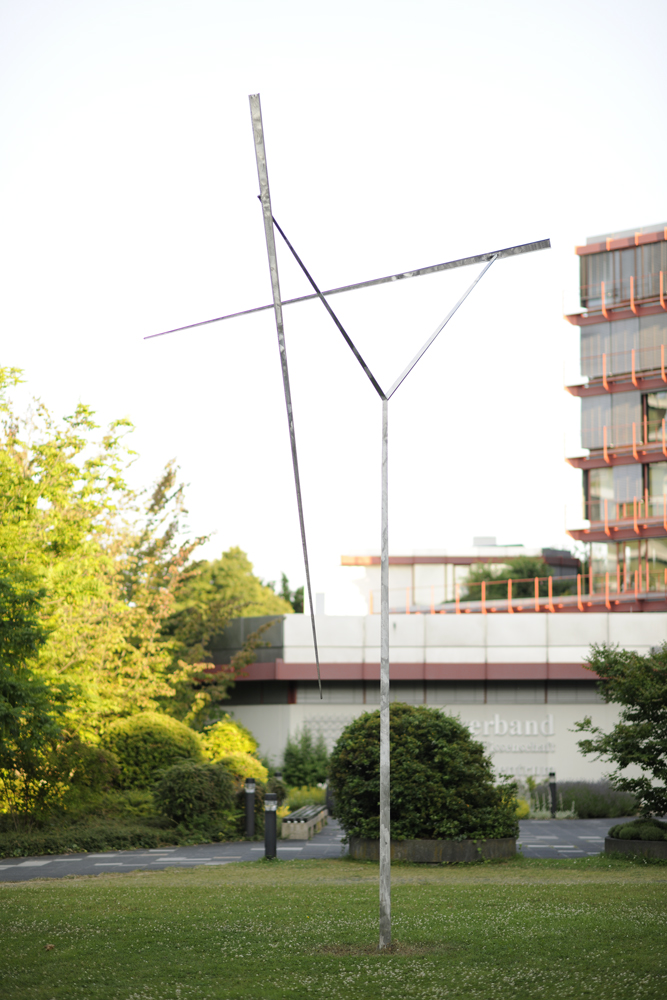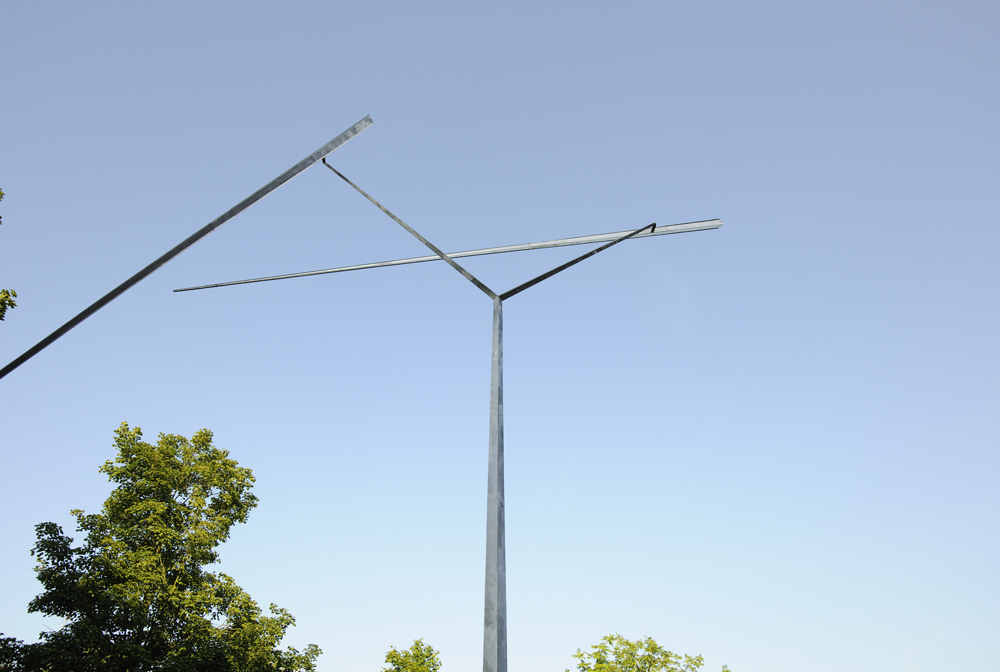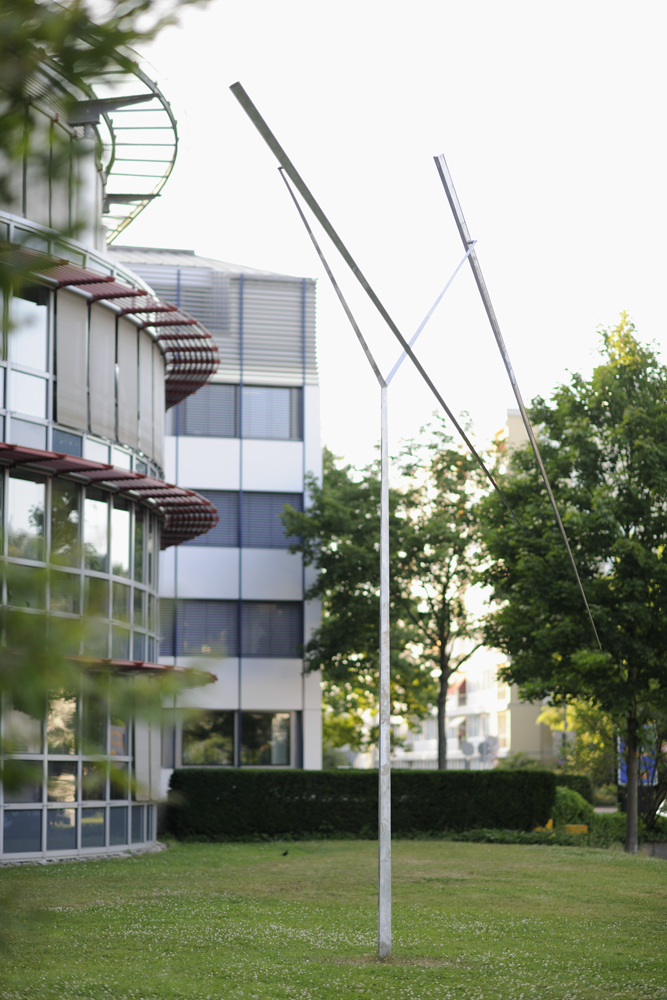Two Lines Oblique




George Rickey held a DAAD scholarship in Berlin in 1968 and 1969. With the support of a German patron, he donated the sculpture in Bad Godesberg as a means of saying thank you for the grant.
Being that it distinctively expresses his primary motif – geometric elements floating seemingly weightlessly in perfect balance – the artist repeatedly created variations on the theme of the Two Lines Oblique in other works.
Although the connection is invisible, the two linear steel elements are attached to the Y-shaped support in such a way that they are set in motion by even the slightest breeze. The scientific principle of a pendulum is perfectly incorporated in the design of the sculpture, resulting in an ever-changing choreography of dancing lines and driven by the laws of nature: gravity and air currents.
George Rickey
← Zur Startseite
Bonn, in front of the Wissenschaftszentrum, Ahrstraße
